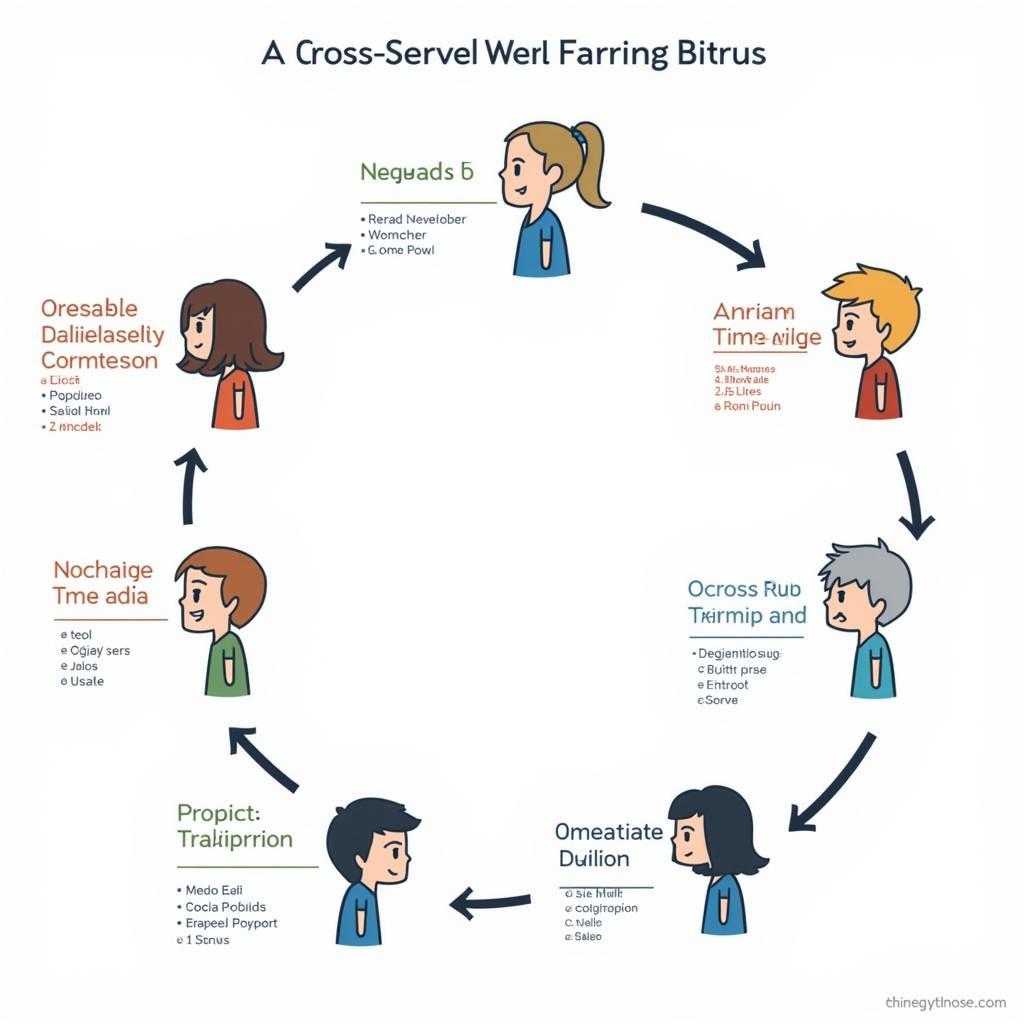Cross-sectional research is a type of observational study that analyzes data from a population, or a representative subset, at a specific point in time. Unlike longitudinal studies, which follow subjects over a period, cross-sectional research captures a snapshot of a group at one particular moment. This approach proves valuable for examining the prevalence of specific characteristics within a population and identifying potential associations between variables.
Understanding Cross Sequential Research
Imagine you’re interested in exploring the relationship between social media usage and anxiety levels among young adults. A cross-sectional study would involve surveying a group of young adults at a single point in time, gathering information on their social media habits and measuring their anxiety levels using standardized questionnaires. By analyzing this data, researchers can determine if there’s a correlation between these variables.
 Example of cross-sectional research
Example of cross-sectional research
Key Features of Cross Sequential Research
Here are some defining characteristics of cross-sectional research:
- Single Point in Time: Data collection occurs only once, providing a snapshot of the variables under investigation at that specific moment.
- Observational Nature: Researchers observe and record data without manipulating any variables or influencing the participants’ environment.
- Prevalence and Correlation: Cross-sectional studies excel at determining the prevalence of particular characteristics or behaviors within a defined population. They can also reveal potential correlations between variables, although they cannot establish cause-and-effect relationships.
Advantages of Cross Sequential Research
- Efficiency: Collecting data at a single point in time makes cross-sectional studies relatively quick and cost-effective compared to longitudinal studies that require extended data collection periods.
- Ethical Considerations: Since cross-sectional research is observational and doesn’t involve manipulating variables, it often poses fewer ethical concerns than experimental studies.
- Hypothesis Generation: While unable to prove causation, cross-sectional studies can unveil intriguing associations between variables, laying the groundwork for further research using more robust methodologies.
Limitations of Cross Sequential Research
- Inability to Establish Causality: This is a significant limitation. While a cross-sectional study might reveal a correlation between social media use and anxiety, it cannot determine if one causes the other. Other factors not measured in the study could be contributing to the observed relationship.
- Potential for Bias: Various biases can creep into cross-sectional research, such as selection bias (if the sample isn’t truly representative of the population) or recall bias (participants might not accurately remember past events or behaviors).
 Limitations of using cross-sectional research methods
Limitations of using cross-sectional research methods
Cross-Sectional Research in Action
Cross-sectional studies find applications in diverse fields, including:
- Healthcare: Assessing the prevalence of certain diseases within specific demographics.
- Social Sciences: Examining attitudes, beliefs, and behaviors within populations.
- Market Research: Understanding consumer preferences and purchasing patterns.
- Education: Evaluating the effectiveness of different teaching methods.
Conclusion
Cross-sectional research, with its focus on a single point in time, serves as a valuable tool for researchers seeking to understand the characteristics of populations and explore potential relationships between variables. While it cannot establish cause and effect, its efficiency and ethical considerations make it a practical approach for generating hypotheses and guiding further investigation.